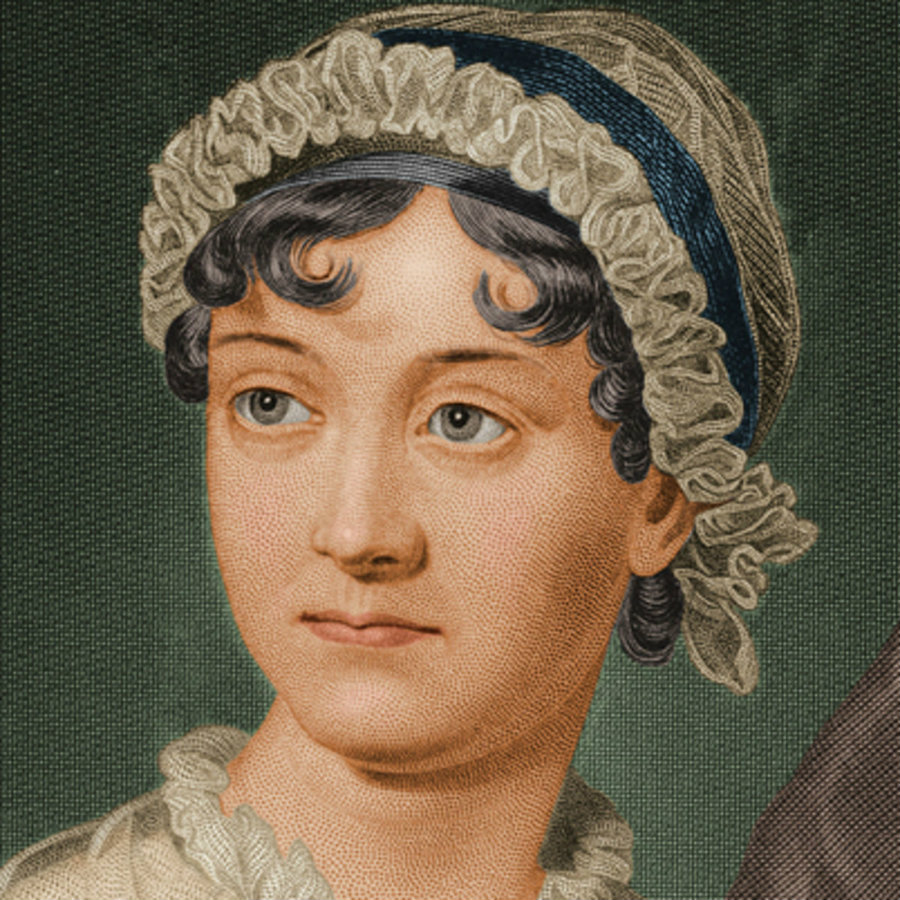New evidence suggests that Jane Austen may have died from arsenic poisoning, instead of Addison’s disease. The theory was proposed by researchers at the British Library on Thursday, following an investigation conducted on Ms. Austen’s spectacles. Apparently, traces of arsenic were discovered in three pairs of spectacles, which may have caused her to develop cataracts and could’ve led to her poisoning.
The acclaimed author died in 1817 at the age of 41 reportedly from Addison’s disease, a condition in which the adrenal glands do not produce enough steroid hormones. It’s a disease that can cause abdominal pain, darkening of the skin, vomiting, and loss of consciousness. Other theories wage the possibility that she could’ve died from cancer or tuberculosis.

It isn’t the first time that an arsenic poisoning theory surfaces regarding Jane Austen’s death. In 2011 crime writer Lindsay Ashford claimed that the author had died from arsenic poisoning, following an investigation Ashford conducted checking numerous sources. She believes that her doctor could’ve prescribed the poison for rheumatism, and she explains it all in the novel she published named The Mysterious Death of Miss Austen.
Now, the British Library has provided new evidence that could support that hypothesis. In a blog post that appeared online this Thursday, Sandra Tuppen, a curator at the British Library, revealed that the library had tested three pairs of spectacles, allegedly owned by Ms. Austen. The glasses had been kept in Austen’s writing desk until 1999 when a descendant of the author gave them to the British Library.
“The tests revealed that the three pairs of spectacles are all convex or ‘plus’ lenses, so would have been used by someone longsighted. In other words, their owner needed glasses for close-up tasks, such as reading. Interestingly, one of the pairs is much stronger than the others” wrote Tuppen in the blog post.
Austen’s severely deteriorated eyesight was a known fact, which she complained about in the letter she wrote, calling her eyesight “weak.” Tuppen speculates that she could’ve gradually needed stronger glasses as her eyesight grew weaker.
Arsenic prescription
For Simon Barnard, an optometrist residing in London, the glasses could suggest that Austen suffered from cataracts, but he says it is also possible that she may always have been longsighted and initially used the wire-framed pair for reading and distance viewing. Later, she could have required a slightly stronger pair, for reading and used the strongest pair for extremely close work, such as fine embroidery, which would have been held closer to the face than a book.
He also added that if she had cataracts, it could’ve developed from a more serious illness like diabetes, although it is highly unlikely that Austen had diabetes, seeing as diabetes was a fatal disease in the 19th century, and Austen wouldn’t have lived as long as she did. Barnard suggested that she could have developed cataracts from poisoning from heavy metal, such as arsenic.

Although it may seem unfathomable that a doctor would prescribe arsenic for treating a disease, it was quite common in the 19th century, as Tuppen explains.
“Arsenic was commonly found in medicines in the 19th century England, as well as in some water supplies,” she wrote.
The spectacles’ origin
Austen, who suffered from different conditions, was also known to have joint inflammation and pain, or rheumatism as it was called in her time. Doctors usually prescribed arsenic or arsenic-based medicines for rheumatism, sometimes on a daily basis. Another symptom of arsenic poisoning is hyperpigmentation.
“I have had a good deal of fever at times and indifferent nights, but I am considerably better now and recovering my looks a little, which have been bad enough, black and white and every wrong color,” said Austen, in a letter written months before her dead.
However, it doesn’t necessarily mean she was poisoned because hyperpigmentation or darkening of the skin also occurs with Addison’s disease.
The research made by the British Library can’t, however, determine that the spectacles tested were, in fact, Austen’s. Tuppen finishes the blog post clarifying that.
“Although prescription lenses were in use in Austen’s day, we don’t know whether these glasses were prescribed for her by a physician, or whether she bought them ‘off-the-shelf’. We can’t be completely sure that she wore them at all. However, we are keen to publish these test results in the hope that other eye specialists will share their ideas and opinions with us,” Tuppen states.
After Austen’s death in 1817, her hair was clipped and distributed among relatives and friends by her sister Cassandra, and one of Austen’s locks is at Jane Austen’s House Museum in Chawton, England. If she actually died of arsenic poisoning, a simple hair test would suffice to find out.
Source: Minn Post

Bad story. I was diagnosed with type 2 Diabetes and put on Metformin on June 26th, 2016. I started the ADA diet and followed it 100% for a few weeks and could not get my blood sugar to go below 140. Finally i began to panic and called my doctor, he told me to get used to it. He said I would be on metformin my whole life and eventually insulin. At that point i knew something wasn’t right and began to do a lot of research. Then I found Lisa’s diabetes story (google ” HOW EVER I FREED MYSELF FROM THE DIABETES ” ) I read that article from end to end because everything the writer was saying made absolute sense. I started the diet that day and the next morning my blood sugar was down to 100 and now i have a fasting blood sugar between Mid 70’s and the 80’s. My doctor took me off the metformin after just three week of being on this lifestyle change. I have lost over 30 pounds and 6+ inches around my waist in a month. The truth is we can get off the drugs and help myself by trying natural methods
Idiots that don’t know much about Addisons Disease.The arsenic most likely caused a adrenal crisis.